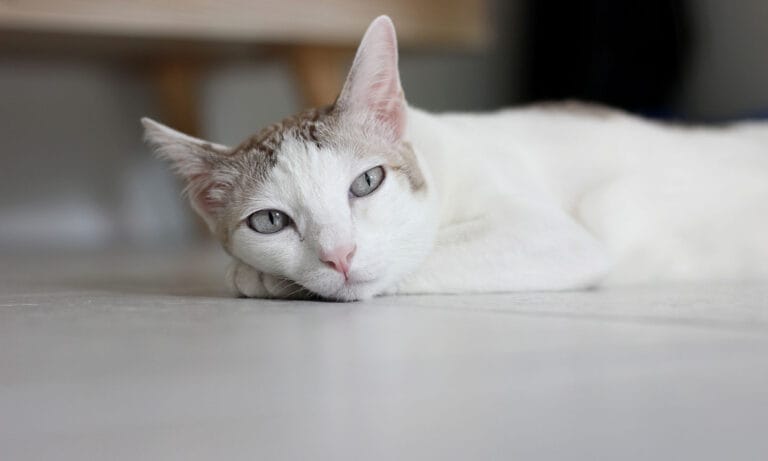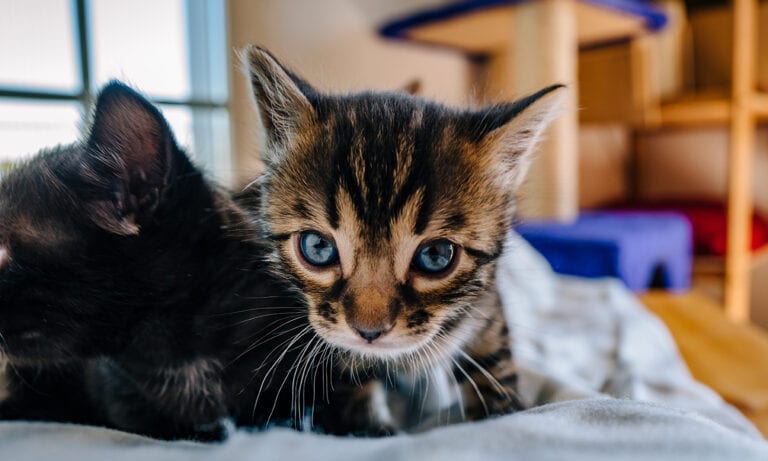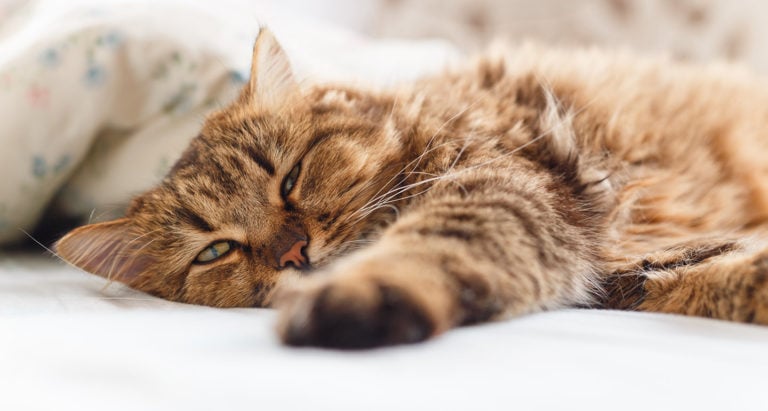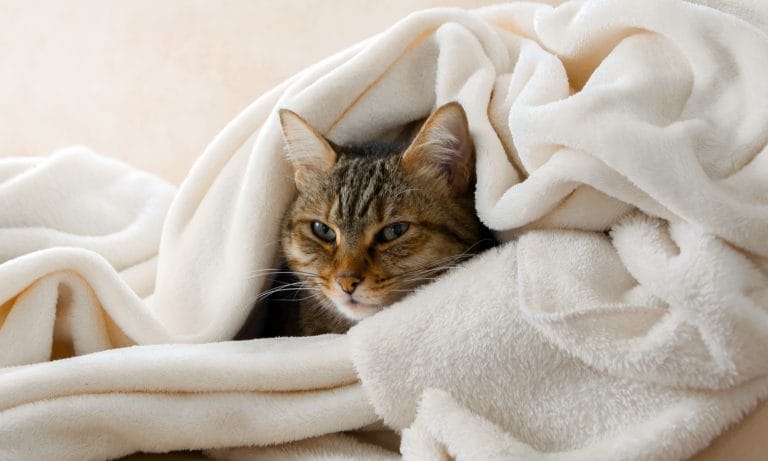Hairballs can be a nuisance—and not just for pet owners; Cats, too, are unpleasantly surprised by the formation of wads of gooey cat fur in their digestive tracts. Luckily for you and your beloved hairball factory, there are remedies available that can limit (and even eliminate!) cat hairballs from making their way into your home. Even better for your feline friend, these cat care tips will help prevent any health problems that may arise from excessive hairball formation.
What causes hairballs?
If you are the proud owner of a cat, you are probably aware of just how often they are grooming themselves. “A cat spends 10% of their waking hours grooming themselves,” says Dr. Danielle Bernal, veterinarian with Wellness Natural Pet Food. “Cats self-groom with their tongue and forepaws to systematically clean their entire body. Licking removes dirt and stimulates skin secretions that keep their coat waterproof and shiny, but inevitably, some hair is swallowed during the grooming process.”
Your cat’s tongue is designed like a mini hairbrush—it picks up all the loose fur for disposal. Their hair doesn’t glide through their digestive tract so easily, though. His stomach and pancreatic enzymes are unable to digest the fur, so it just passes along, intact, and if all goes well, into the stool. “Up to two thirds of a cat’s shed hair can be ingested as they self-groom. This equates up to one ounce of hair daily,” she says. “These loose hairs can pack together in a cat’s stomach and form a hairball. Cat hairballs generally consist of compacted fur, but they often also include food and a coating of mucus.” That’s when your cat will try tirelessly to expel these wads of fur, by “coughing, gagging or regurgitating,” usually shortly after mealtimes.
Identifying a hairball is easy. “Regurgitated hairballs are variable in size, usually about an inch long, but they can be as long as five inches and an inch thick. The color is mainly that of the cat’s coat, darkened by the color of their food, and various gastric secretions, such as green bile,” Dr. Bernal notes. The odor is known to be unpleasant, but tolerable.
Signs of Health Problems
For cats who groom frequently or shed a lot, hairballs can be a common occurrence. It’s important to be cautious, though, as excessive cat hairball formation can lead to other medical issues. “Hairballs are always a messy inconvenience, but they can also be a sign of discomfort or potential serious problems,” Dr. Bernal says. If you notice that your feline friend is coughing up hairballs a little too often, there are key symptoms to look out for, including “continued retching that does not result with the expulsion of a hairball, frequent diarrhea, or loss of appetite after repeated hairball episodes.” Other signs of discomfort to look out for are regurgitation and vomiting, constipation or diarrhea, intestinal obstructions and loss of appetite. It is advised that you take your kitty on a trip to the veterinarian for further investigation if any of these symptoms become apparent.
Hairball remedies
If it feels like your cat’s hairballs are taking over your home, you are not alone. Many pet parents are actively searching for ways to prevent and eliminate cat hairballs. Luckily, with proper routine cat care, you can say goodbye to hairballs forever!
Grooming. Brushing your cat’s hair as often as daily is basically like beating your cat to the punch. If you want to prevent hairballs, it is essential that you give him a good brushing before he can lap his lose hairs into his little tummy himself. “Brushing removes dead hairs and helps to prevent excessive hair ingestion when a cat self-grooms,” Dr. Bernal says. “[This is] one of the easiest, and most enjoyable, approaches to reducing hairball formation.”
Many cats enjoy the attention and interaction with their owner during grooming sessions, so brushing your cat can even strengthen the bond you share with your feline friend. “Just like people, self-grooming can increase when a cat is stressed, so this bonding time can also help to reinforce a safe and happy environment and reduce self-grooming sessions,” she says.
Though brushing your cat daily is the most effective cat care method for reducing hairballs in your cat, just brushing your cat several times per week can substantially decrease the amount of hair that a cat ingests. Dr. Bernal also encourages pet parents to give their cats an occasional bath or to bring them in for professional grooming to help remove loose hairs and decrease hair ingestion.
According to Dr. Bernal, long-haired cats, like Persians and Maine Coons, are especially susceptible to hairballs, as their long hairs can easily get trapped within their digestive system. Because of this, it is particularly important that you spend extra time grooming these breeds.
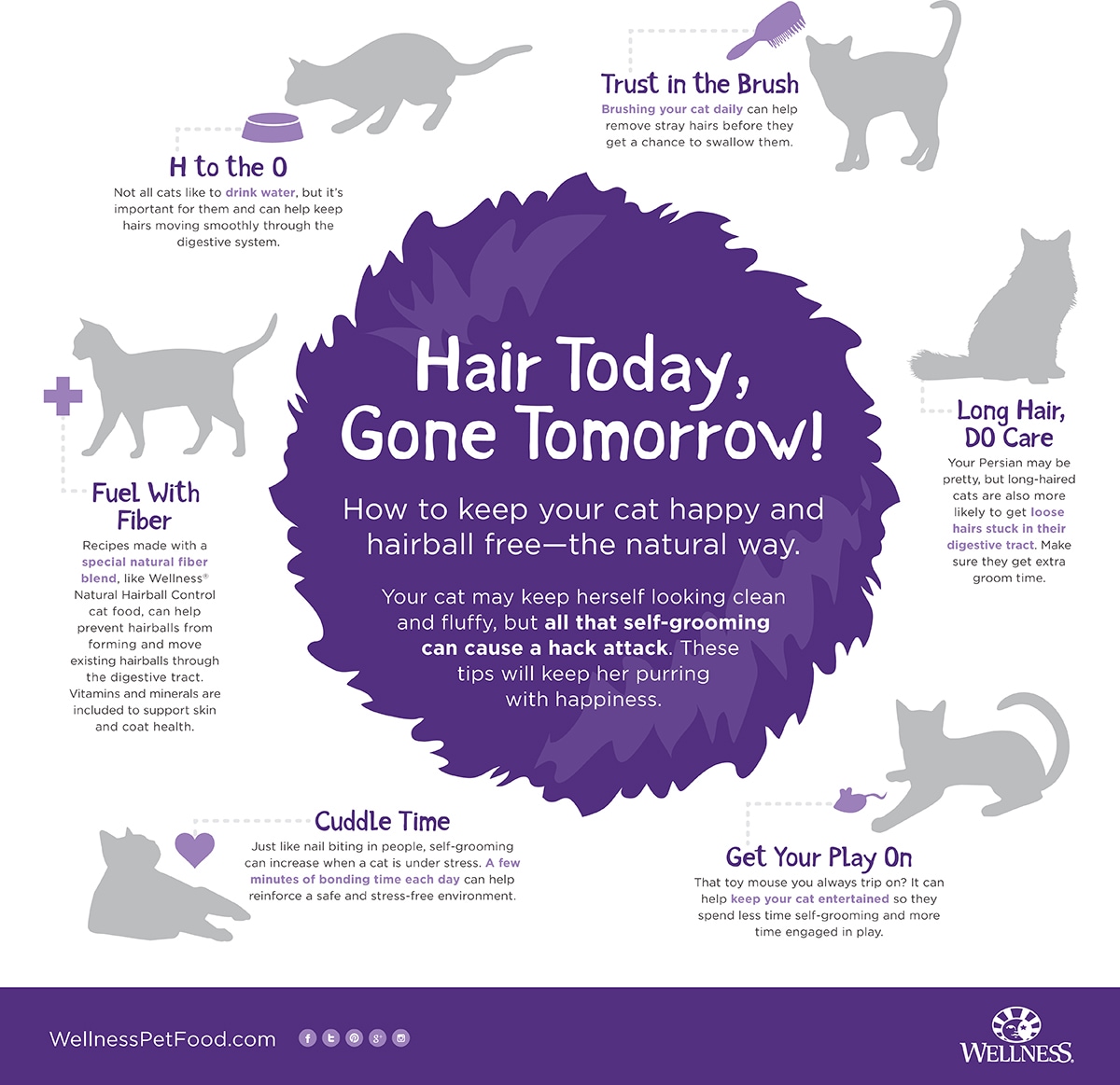
Diet. Luckily, there are hairball management formulas available on the market that can help with the prevention of hairball formation in your cat. These formulas will typically use dietary fiber to provide the bulk necessary to promote movement of hair through the intestine.
Promoting skin and coat health through nutrition is also essential for hairball management, so you should look out for diets that include “an optimal omega-6 to omega-3 fatty acid ratio to support a lustrous coat and healthy skin,” Dr. Bernal says.
The Wellness Natural Hairball Control Dry Cat Food is a vet-formulated recipe scientifically proven to help manage hairballs. This tasty, yet effective cat food formula uses dietary pea fiber to aid in digestion, and includes additional fibers that provide nourishment to the intestinal tract to support optimal digestion. Also included in the formula are essential vitamins and minerals to contribute to healthy skin and coat and whole-body nutritional support.
For best results, Dr. Bernal recommends feeding your cat a hairball management diet exclusively, “as mixing with other foods can dilute the fiber and reduce its effect on hairball passage in the intestines,” she says. “Likewise, switching between a hairball diet and another cat food can also decrease the benefits of the hairball diet.”
In addition to an effective hairball management diet, it’s imperative that your cat has access to fresh, clean water to help keep hair moving through the digestive system. “If hairballs are a persistent issue, you can discuss petroleum-based laxatives with your veterinarian,” she says.
Share:


